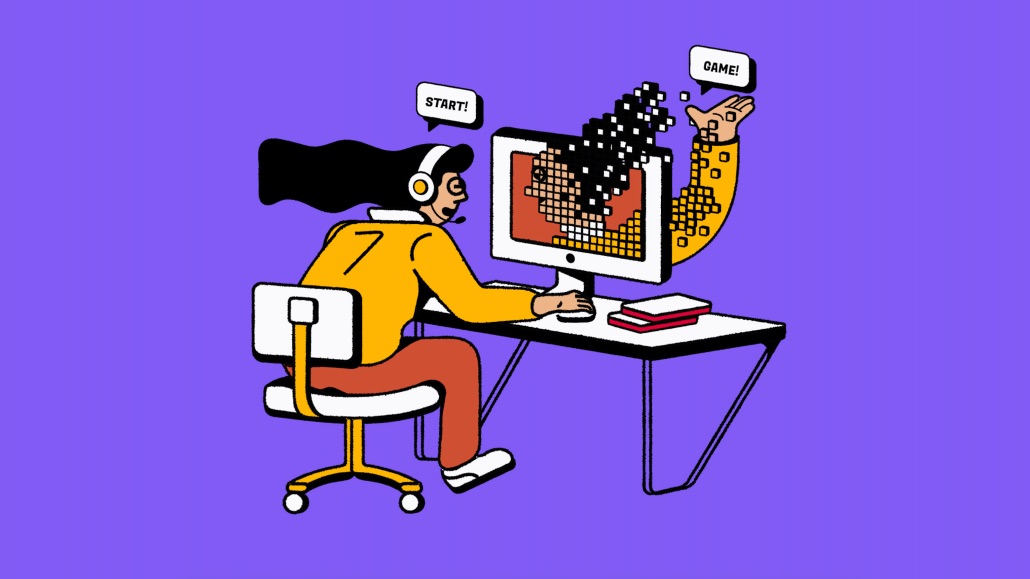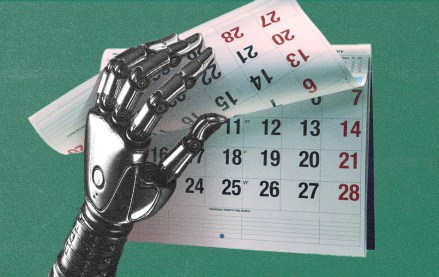Epic aims to boost originality in Fortnite’s creator ecosystem

As a Digiday+ member, you were able to access this article early through the Digiday+ Story Preview email. See other exclusives or manage your account.This article was provided as an exclusive preview for Digiday+ members, who were able to access it early. Check out the other features included with Digiday+ to help you stay ahead
Fortnite’s copycat culture might finally be on its way out.
Fortnite creators’ habit of copying other creators’ popular experiences, rather than developing original games, has long frustrated both fellow creators and brands looking to invest in the platform’s growing creator ecosystem. At last week’s Unreal Fest in Orlando, Florida, Epic Games acknowledged the issue and introduced a range of new tools and functions that creators say could finally encourage more originality.
“There’s a cat-and-mouse game going on — basically, people being different sorts of bad actors in Fortnite, and copying or violating the rules in ways that we’re not yet good at moderating,” Epic Games CEO Tim Sweeney told Digiday. “We’re constantly evolving to improve, but there’s always a leading edge of people improving the way they abuse the system.”
During its State of Unreal keynote talk at last week’s Unreal Fest — Epic’s conference for creators and developers who use Unreal Engine — Epic Games executives spent 30 minutes rattling off a slew of updates aimed at Unreal Editor for Fortnite creators. Highlights included an AI coding assistant, a new data analytics tool that gives creators more insight into their metrics and “Scene Graph,” a tool that lets creators prefabricate virtual environments and duplicate them across multiple locations within a map or game, with edits to the original automatically applied to all copies.
Fortnite creator studios such as JOGO, Good Gamers and Atlas Creative believe Epic’s streamlined creation tools will encourage creators to innovate more and copy less by reducing the overall time investment — usually somewhere between two weeks and two months — necessary to build a new Fortnite experience. If building new experiences becomes a lighter lift, creators can spend more time experimenting and building unique experiences, instead of defaulting to proven copycat formats.
“These tools, like Scene Graph or custom items, just give us more opportunities to make our games really stand out. They’re opportunities that are present if you were to make a game on Steam or Roblox; it feels like we’re catching up at this point, and I think we’re all eager to finally get caught up,” said Fortnite creator and JOGO founder Andre “Typical Gamer” Rebelo.
Creators also believe Fortnite’s new creator metrics will help marketers feel more confident advertising on the platform. Historically, Fortnite creators have had access to significantly less data about their audience than creators on Roblox, but Fortnite creators believe the new data analytics tool will help Epic Games gain some ground against its competitors.
“Something we’ve been asking for for a long time has been benchmarks. I can understand why certain creators might not like that, but overall, it should help the platform, right?” said Atlas Creative COO Cody Flaherty. “Broader access to data is going to allow creators to understand where they have shortcomings and where to focus on, and that’s going to help content across the platform as a whole.”
Also during UnrealFest, Epic announced a new internal metric — the “similarity score” — which will gauge new experiences’ similarity to pre-existing games and either block or depress the discovery of copycat experiences, depending on the severity of the copying. The new function will be rolled out “later this summer,” per the presentation, with enforcement exclusively applying to new experiences published after the launch. Creators will receive a warning during the publishing process if their experience has a high similarity score, giving them an opportunity to add more unique elements and reduce the score.
“We are very encouraged by the news of the addition of similarity score to combat copycat islands,” said Good Gamers strategic partnerships manager Zack Billingham. “It is one of many additions to the UEFN ecosystem that we are excited for following Unreal Fest.”
To some extent, creators copying pre-existing and successful content is a phenomenon that occurs across all forms of media. But this issue is particularly present in user-generated content (UGC) platforms like Fortnite and Roblox — and notably so in Fortnite, according to six creators who spoke to Digiday at Unreal Fest 2025. (Editor’s note: Epic Games paid for this reporter to travel and board at Unreal Fest 2025, but did not agree to specific coverage.)
Fortnite’s primary revenue stream for creators is an engagement payout, which calculates its total based on a creator’s overall traffic and engagement, encouraging creators to stick to proven experiences types rather than take creative risks. Unlike Roblox, Fortnite’s culture is rooted in its “Battle Royale” mode, leading many creators to emulate its core gameplay loops.
“Fortnite became known for its ‘Battle Royale,’ and on one element that is a wonderful thing, because it became very, very successful through that game mode — but it acquired its user base via that game mode, and they are now shifting to be a multi-game-mode ecosystem and platform,” said Charles Hambro, CEO of the UGC data platform GEEIQ. “Ultimately, Roblox did not start like that; Roblox started as a multi-game-mode sandbox. So, I think the reason why the copycat stuff is accentuated in Fortnite is because the majority of the player base is used to playing ‘Battle Royale.’”
For buyers, any updates that offer to expand the types of games available on Fortnite — and reduce the number of copycats — is a positive signal that they believe could encourage more of their clients to dip their toes in.
“Bigger variety of content with volume equals more brand activations, because only certain brands want to integrate into Battle-Royale-esque gameplay mechanics,” said Hambro, who has managed requests for proposals for advertisers such as Walmart in his role at GEEIQ. “Most brands are not interested in Battle Royale gameplay mechanics; they’re interested in social mechanics.”
Although some brands are aware of Fortnite’s copycat problems, Dario Raciti, the director of Omnicom’s gaming and esports group Zero Code, said that many are not, preferring to create their own maps instead of plugging into pre-existing popular experiences. However, he said that Epic’s efforts to make Fortnite a more welcoming platform for creators would encourage more brands and marketers to pay attention to the space.
“Epic is on the right track and while it doesn’t compete directly with Roblox they can see where more flexibility and access attracts more creators to their game,” Raciti said. “Not sure brands is their priority yet, at least not in the way it is becoming for Roblox.”
More in Media

Media Briefing: The top trends in the media industry for 2025
This week’s Media Briefing takes a look at the top trends from 2025, from digital advertising revenue performance to AI licensing deals.

Digiday Scorecard: Publishers rate Big Tech’s AI licensing deals
Digiday has compiled a scorecard grading AI platforms to make sense of the growing number of players in the AI content licensing market.

Publishers are hunting for AI prompt data — now they’re starting to get it from third-party companies
Publishers are finally gaining some visibility into AI search, as new prompt data tools crack open a black box.








